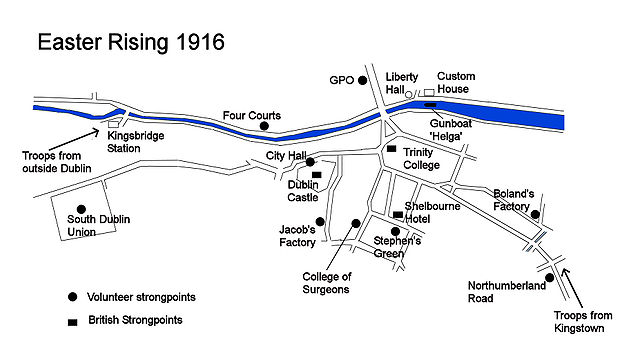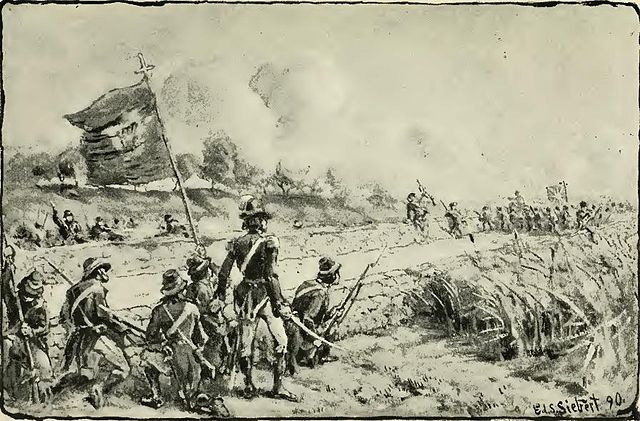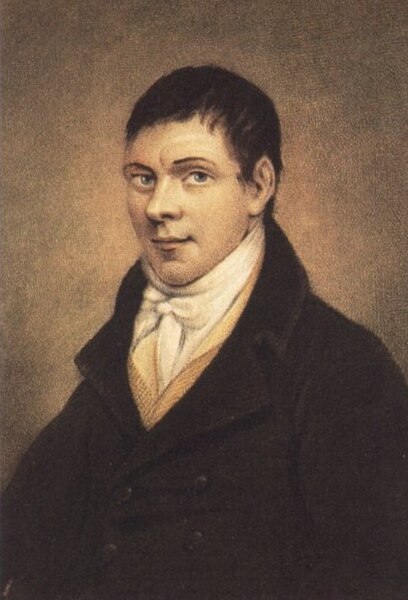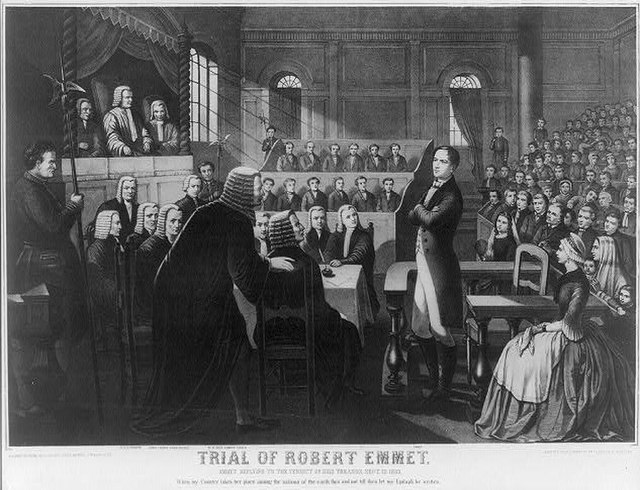The Easter Rising, also known as the Easter Rebellion, was an armed insurrection in Ireland during Easter Week in April 1916. The Rising was launched by Irish republicans against British rule in Ireland with the aim of establishing an independent Irish Republic while the United Kingdom was fighting the First World War. It was the most significant uprising in Ireland since the rebellion of 1798 and the first armed conflict of the Irish revolutionary period. Sixteen of the Rising's leaders were executed starting in May 1916. The nature of the executions, and subsequent political developments, ultimately contributed to an increase in popular support for Irish independence.
O'Connell Street, Dublin, after the Rising. The GPO is at left, and Nelson's Pillar at right.
Members of the Irish Citizen Army outside Liberty Hall, under the slogan "We serve neither King nor Kaiser, but Ireland"
The General Post Office in Dublin – the rebel headquarters
Positions of rebel and British forces in central Dublin
Irish republicanism is the political movement for the unity and independence of Ireland under a republic. Irish republicans view British rule in any part of Ireland as inherently illegitimate. An ideology since the 17th century, various methods have been employed to achieve the republic, including rebellions and paramilitary campaigns. Although the makeup of republicanism has been multidenominational, its relation to catholicism increasingly became central.
The Battle of Killala marked the end of the rising
Michael Dwyer
Depiction of Robert Emmet's trial
William Smith O'Brien, leader of the Young Ireland movement








